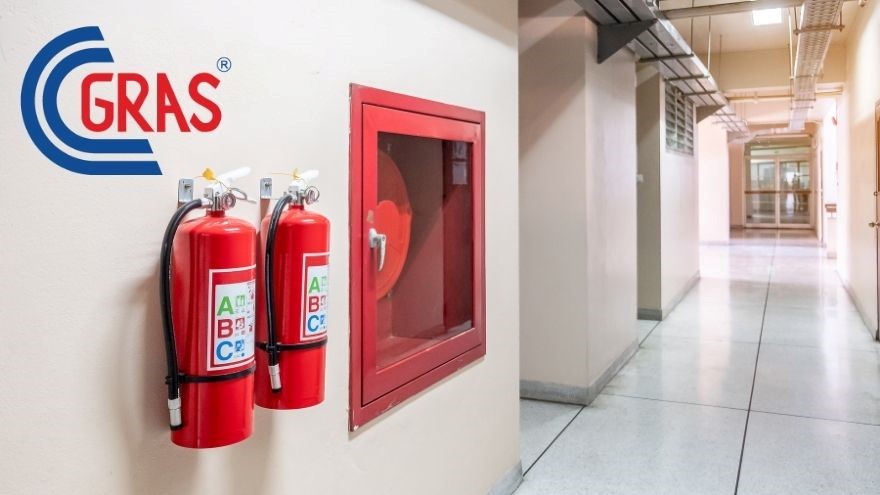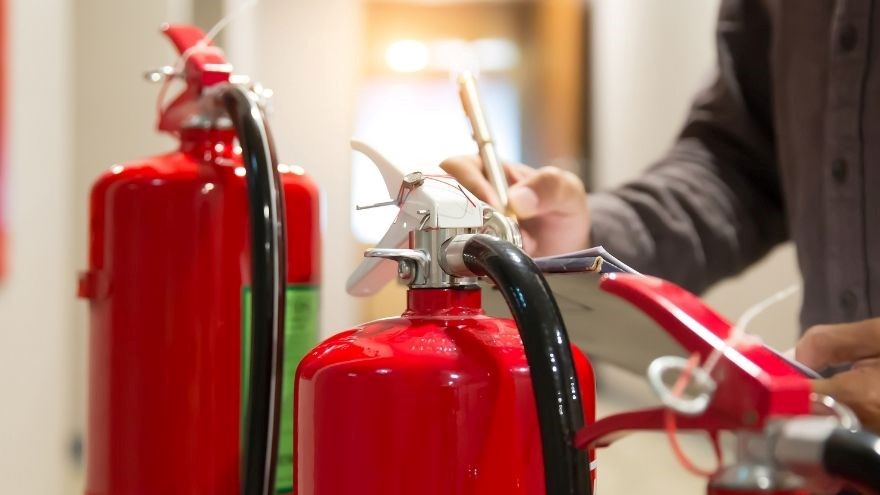Internal hydrants are essential elements of fire protection systems that allow you to quickly and effectively extinguish flames in an emergency situation. Even though their use is relatively rare, they are commonly used in certain types of buildings. When do regulations require their installation?

From this article you will learn:
- what regulations regulate the use of internal hydrants,
- when installation of internal hydrants is required,
- which internal hydrants to choose.
Internal hydrants - regulations
The use of internal hydrants is regulated by the provisions contained in the Regulation of the Minister of Internal Affairs and Administration of June 7, 2010 on fire protection of buildings, other buildings and areas. To understand them, it is also necessary to know the definitions specified in the Regulation of the Minister of Infrastructure of April 12, 2002 on the technical conditions to be met by buildings and their location. It is also worth paying attention to Polish Standards regarding fixed fire extinguishing devices. They will provide you with information on different building categories and hazards. Thanks to them, you will understand which internal hydrants should be used in buildings of a given type.
Internal hydrants – when is their use required?
An internal hydrant is a permanent device, placed in the water supply network, intended to extinguish group A fires. It has a wider range of operation than a fire extinguisher and is primarily used to nip fires in the bud and extinguish fires.
The regulations do not require the installation of internal hydrants in every building. This is necessary only in the case of facilities most exposed to fires. The obligation to use this type of security applies primarily to structures of specific sizes or functions. This includes, among others:
- fire zones classified as a human hazard category (ZL),
- garages,
- industrial and warehouse facilities,
- tall and high-rise buildings.
Each of these cases will require the use of a different type of internal hydrants. Let's take a closer look at them.
GRAS brand hydrants
Hydrants DN25
DN25 hydrants should be used in fire zones classified as hazardous to people:
- ZL I – discos, cinemas, theaters,
- ZL II – kindergartens, hospitals, social welfare homes,
- ZL V – hotels, boarding houses.
 In the above cases, internal hydrants DN25 are required when the fire zone has an area larger than 200 m 2 . The regulations regarding human hazard zones ZL III and ZL IV are slightly different, because the obligation to install hydrants depends on the height of the building and the layout of the floors.
In the above cases, internal hydrants DN25 are required when the fire zone has an area larger than 200 m 2 . The regulations regarding human hazard zones ZL III and ZL IV are slightly different, because the obligation to install hydrants depends on the height of the building and the layout of the floors.
Hydrants DN33
The regulations regarding the use of DN33 hydrants are less complicated. These devices are primarily used to secure garages:
- single-story - if we are talking about a closed structure intended for more than 10 cars,
- multi-story buildings – regardless of the number of parking spaces.
Interestingly, DN33 internal hydrants can also be used in some industrial and warehouse rooms.
Hydrants DN52
However, mainly DN52 hydrants are used to protect industrial and warehouse facilities. The obligation to use them results from the fire load density in the fire zone and the area of this zone. In order to determine the need to install a hydrant, both of these criteria are combined in various combinations. Some of them also allow the above-mentioned use of DN33 devices.
Hydrant valves 52
Hydrant valves 52 can be considered the fourth type of indoor hydrants. They differ from the others in that they do not have a snake. For this reason, they are used on irrigated risers, maintained at optimal pressure, which are supplied from water networks and additionally from fire trucks. The valves are installed in tall and high-rise buildings, also to protect fire zones classified in the ZL IV human hazard category.
Rules for installing internal hydrants
An internal hydrant consists of a valve, a hose, a nozzle, and sometimes also a drum or reel. Individual types of devices (DN25, DN33, DN52) differ mainly in hose diameter. It has a direct impact on their structure and the shape of the cabinets in which they are placed.
The condition for installing an internal hydrant of a given type is a guarantee of minimum water intake efficiency from the installation. In the case of this device, it is measured at the outlet of the nozzle. This parameter depends on the type of hydrant and its application:
- 1 dm 3 /s - for internal hydrants DN25,
- 1.5 dm 3 /s - for internal hydrants DN33,
- 2.5 dm 3 /s - for internal hydrants DN52 and valves DN52
When installing fire hydrants in a building, remember that they should cover the entire surface. Therefore, the devices must be located on every floor - especially at entrances, corridors and emergency exits from rooms at risk of explosion. It is also important to provide enough space to unwind the hose efficiently and safely.
Exchange benefits in the new OnnTop loyalty platform!
GRAS internal hydrants in the Onninen offer
When looking for high-quality internal hydrants for fire protection installations, be sure to check out the offer of our online wholesaler! Here you will find reliable GRAS devices in many variants tailored to specific customer requirements.
The models available in our assortment include neither universal DN25 hydrants nor efficient DN52 hydrants. There are also various types of accessories that allow you to create a functional and aesthetically disguised fire protection system in any facility.
DN25 internal hydrants from the GRAS range are equipped with a patent lock and a semi-rigid hose in a 20- and 30-meter variant. Thanks to the modular design of the product, its flexible configuration is possible, in line with individual needs. This is a device that should not be missing in schools, kindergartens, office buildings, hotels, cinemas and shopping malls.
DN52 hydrants available in the GRAS offer are equipped with a flat-folding hose and double-sided power supply. Devices of this type - similarly to the DN25 variants - are suitable for surface mounting. Their cabinets are covered with polyester powder paint, making them perfect for industrial use.
By choosing GRAS products, you gain a guarantee of the highest quality of workmanship and operational reliability. This is a Polish brand present on the market since 1985. It specializes in the design, production and distribution of fire protection solutions and equipment used in rescue and occupational health and safety. If you want to create a perfect security system, trust an experienced manufacturer like GRAS, whose products can be found in the offer of the hydraulic wholesaler Onninen.pl.
Do you have questions about the industry? Join the Świat Instalacji group!
